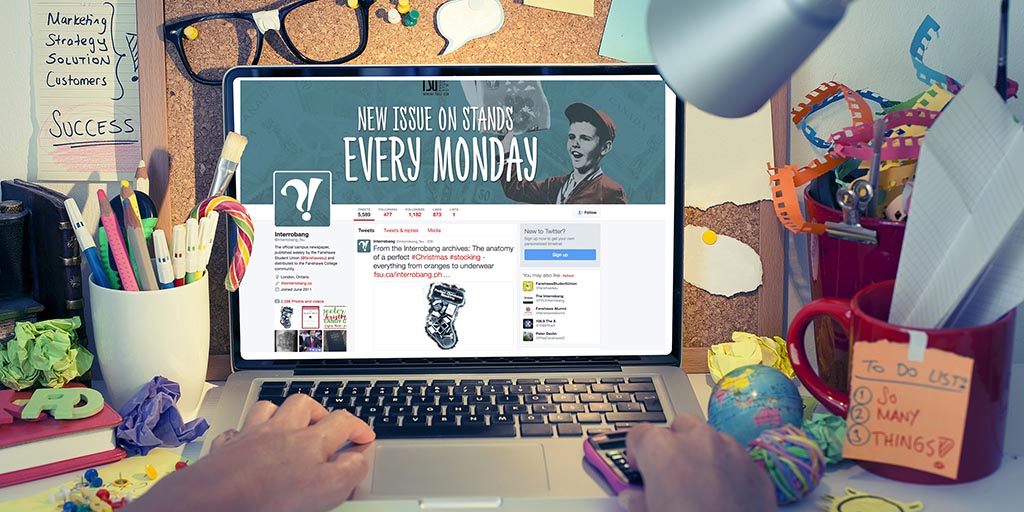Social media bridges the gap between #Fanshawe and its students
 CREDIT: DESIGNED BY DEENA GRIFFIN
CREDIT: DESIGNED BY DEENA GRIFFINFanshawe uses Facebook, Twitter, Instagram, LinkedIn, Snapchat and YikYak to interact with its students, be it a congratulatory message, an informative one or even any negative pieces of engagement from the students.
Should you happen to get lost in the labyrinth that is Fanshawe College, remain calm and do the following: upload a selfie of your location to Instagram, and be sure to tag the school. Sarah Carruthers, Fanshawe’s trusty social media communications officer, will have your back within minutes.
“We’ll come find you,” Carruthers promised. “Social media is a great resource students can go to with any of their questions or concerns.”
Fanshawe is one of many educational institutions across Canada to successfully engage with its student body via a wide array of social media platforms.
A recent poll conducted by Academia Forum revealed that 87 per cent of surveyed students had encountered their school’s social media account on at least one platform and nearly a third regularly took to Facebook to interact with their college or university.
Seventy per cent of those students claimed they visited these accounts for practical purposes, such as finding updated campus news.
Other uses included asking general questions or interacting with peers.
At Fanshawe, social media has been most effectively used to build positive relationships with students throughout their academic journey and beyond that as they embark on their careers as alumni.
Frequented platforms include Facebook, Twitter, Instagram, LinkedIn, Snapchat and YikYak.
Carruthers often replies on behalf of the college to posts from prospective students attending college fairs and later congratulates the same students as they gush over admission offers.
Exam periods or times of stress also create opportunities for online outreach.
“Social media has become a channel to share when [students] are going through hard times of the year,” Carruthers said. “Even if it’s a negative piece of engagement, we view it as an opportunity to enhance a relationship and improve upon it.”
While social media can foster friendly relationships between students and their institution, it’s important to maintain a sense of mutual respect, especially when considering the permanent nature of the digital world.
“Students need to be aware that tone and language matter. It matters from a communications perspective and from a personal branding perspective. It’s paid attention to,” Jackie Westelaken, instructor and co-ordinator of the corporate communications and public relations program said.
From a community-building standpoint, the benefits of social media are far reaching when it is used constructively and responsibly. Students, faculty and alumni show no signs of logging off anytime soon.
















